Liposcelididae
Emilie Bess


This tree diagram shows the relationships between several groups of organisms.
The root of the current tree connects the organisms featured in this tree to their containing group and the rest of the Tree of Life. The basal branching point in the tree represents the ancestor of the other groups in the tree. This ancestor diversified over time into several descendent subgroups, which are represented as internal nodes and terminal taxa to the right.

You can click on the root to travel down the Tree of Life all the way to the root of all Life, and you can click on the names of descendent subgroups to travel up the Tree of Life all the way to individual species.
For more information on ToL tree formatting, please see Interpreting the Tree or Classification. To learn more about phylogenetic trees, please visit our Phylogenetic Biology pages.
close boxIntroduction
Liposcelidae includes 9 genera and about 200 species distributed worldwide. About 40 species in the genera Belaphotroctes, Embidopsocus, and Liposcelis are found in North America.
Liposcelids are very small book lice with body colors ranging from dark brown to creamy white. They live under bark, in dead leaves, dead grass, and in the nests of mammals and birds. Liposcelis bostrychophila is a serious domestic pest in buildings and stored food and can develop enormous populations, due in part to their ability to reproduce asexually.
Characteristics
Synapomorphies
- Body is flattened with a long abdomen.
- In the male, the phallosome has broad, elongate parameres.
General Characters
- Head:
- Antennae usually have 15 segments (sometimes 17) and are relatively short.
- Antennal segments have ringed sculpturing (annulations).
- Eyes are reduced: wingless forms have 2-8 ommatidia (eye segments), more in winged forms.
- Legs:
- Tarsi have 3 segments.
- Hind femur is wide and flat.
- Coxae widely separated from one another.
- Wings:
- Adults have either full-length wings or are wingless.
- Wings are long, rounded, and held flat over back at rest.
- Wing veins are reduced: forewing has 4 veins or fewer.
- Male:
- Phallosome has broad, elongate, curved parameres and a complex posterior region (aedeagus).
- Female:
- Subgenital plate often has T-shaped sclerite.
- Gonapophyses are complete, hairless, and arise from a common stem:
- External valve is broad and rounded
- Eggs: Eggs are smooth, laid singly, and are covered with debris.
How to Know the Family
- Body is flattened with a long abdomen.
- Antennae usually have 15 segments (sometimes 17) and are relatively short.
- Eyes are reduced: wingless forms have 2-8 ommatidia (eye segments), more in winged forms.
- Hind femur is wide and flat.
- Coxae widely separated from one another.
- Wings are long, rounded, and held flat over back at rest.
- Wing veins are reduced: forewing has 4 veins or fewer.
Discussion of Phylogenetic Relationships
Morphological study of the male genitalia of Troctomorpha supports monophyly of family Liposcelidae based on the broad, elongate parameres of the phallosome (Yoshizawa & Johnson 2006). Molecular data including five species of genus Liposcelis strongly supports the monophyly of the genus (18S nDNA; Johnson et al. 2004) but other genera of Liposcelidae have not yet been included in molecular analyses.
References
Grimaldi, D. and M. S. Engel. 2006. Fossil Liposcelididae and the lice ages (Insecta: Psocodea). Proc Biol Sci. 273:625–33. doi: 10.1098/rspb.2005.3337
Johnson, K. P., K. Yoshizawa, and V. S. Smith. 2004. Multiple origins of parasitism in lice. Proceedings of the Royal Society of London B 271:1771-1776.
Yoshizawa, K. and K.P. Johnson. 2006. Morphology of male genitalia in lice and their relatives and phylogentic implications. Systematic Entomology 31: 350-361.
Title Illustrations

| Scientific Name | Liposcelis bostrychophila |
|---|---|
| Specimen Condition | Live Specimen |
| Identified By | Charles Lienhard |
| Sex | Female |
| Life Cycle Stage | adult |
| Copyright | © Albert de Wilde |
| Scientific Name | Liposcelis bostrychophila |
|---|---|
| Location | Urbana, Illinois |
| Specimen Condition | Dead Specimen |
| Identified By | E. Mockford |
| Sex | Female |
| Life Cycle Stage | adult |
| Body Part | head |
| View | anterior/lateral |
| Size | 2mm body length |
| Copyright |
© 2006 Emilie Bess

|
| Scientific Name | Liposcelis |
|---|---|
| Location | Ascension Parish, Louisiana, USA |
| Comments | Liposcelis, could be bostrychophila |
| Size | ~1.25 mm |
| Source | Photo#104851 |
| Source Collection | BugGuide.Net |
| Image Use |
 This media file is licensed under the Creative Commons Attribution-NonCommercial-NoDerivs License - Version 1.0. This media file is licensed under the Creative Commons Attribution-NonCommercial-NoDerivs License - Version 1.0.
|
| Copyright | © Perry Babin |
About This Page
Emilie Bess

Illinois Natural History Survey, Champaign, Illinois, USA
Correspondence regarding this page should be directed to Emilie Bess at
bess@inhs.uiuc.edu
Page copyright © 2009 Emilie Bess
All Rights Reserved.
- First online 25 March 2009
- Content changed 25 March 2009
Citing this page:
Bess, Emilie. 2009. Liposcelididae. Version 25 March 2009 (under construction). http://tolweb.org/Liposcelididae/14455/2009.03.25 in The Tree of Life Web Project, http://tolweb.org/




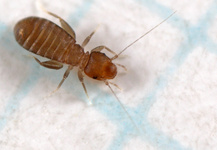
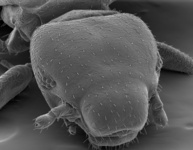
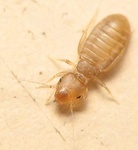
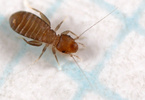
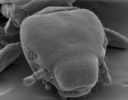


 Go to quick links
Go to quick search
Go to navigation for this section of the ToL site
Go to detailed links for the ToL site
Go to quick links
Go to quick search
Go to navigation for this section of the ToL site
Go to detailed links for the ToL site